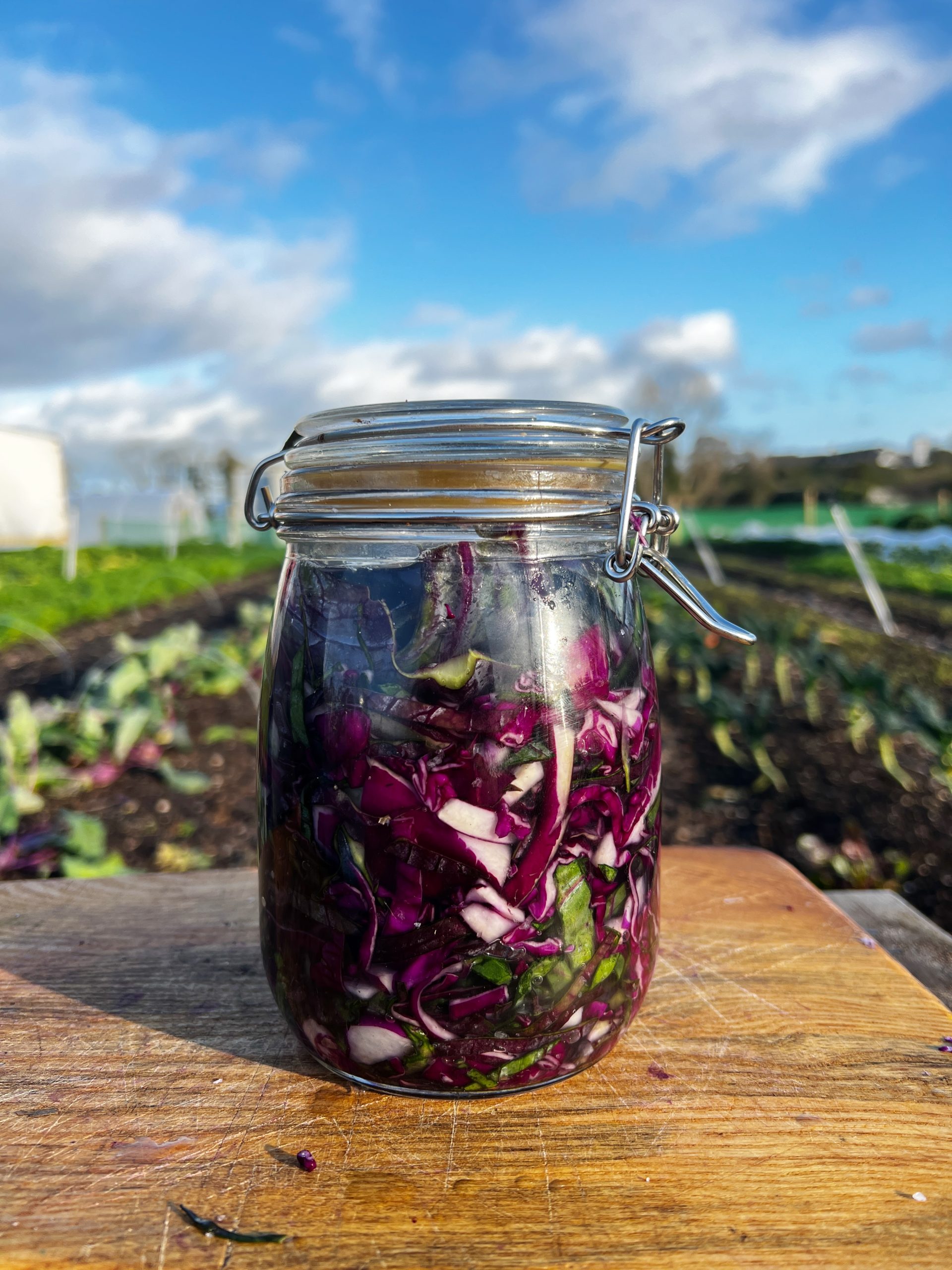
Sauerkraut
The word “sauerkraut” is from German Sauerkraut which literally means “sour cabbage.” Sauer (sour) kraut (cabbage)! We headed to the farm on Wednesday, grabbed ourselves a cabbage and started the first of our fermentation series...How to make Sauerkraut. For those who don't know it, it's one of our favourite probiotics and we pretty much have it every day, in some format! We're using a method known as lactic acid fermentation or lacto fermentation to naturally ferment our cabbage but the beauty of this method is that it’s so easy to apply and it works with virtually all vegetables and fruit.This fermentation process traditionally was used to preserve veg throughout the year but we love it as more bacteria = great probiotics. Ideally, sauerkraut is therefore made from cabbage harvested in Autumn with fermentation taking place during the winter months. Steve's parents-in-law, who are Polish are incredible at fermenting fruits and veg over the winter, to minimise waste!
Takes 5 minutes
Serves 1
Ingredients
- 400 g Cabbage of your choice
- 8 g table salt
- 1 litre water
Instructions
- Remove the first couple of layers of cabbage, if they're looking a little sad...keep them as they're going to be used as a plug later on, to keep your ferment under the liquid (VERY important)
- Slice and chop your cabbage as finely as possible, making small bitesized pieces. Be sure to weigh how much cabbage you're using, so you can apply the 2% rule to your salt. Here we used 400g of cabbage and therefore we needed 8g of salt!
- Transfer the measured cabbage and salt into a big bowl and give them a really good massage. You want the cabbage to start releasing its liquid. You can even use the bottom of your mason jar to give it a good old bang and release even more liquids!
- Carefully put your salty cabbage mixture into your jar and press down with your finger-tips to leave a little room at the top of the jar. Pour water directly over it until all the cabbage it's just submerged. Place the leaves that were put aside earlier on top to plug it and keep all the veg under the liquid. Some people prefer to close the jar, we prefer to leave it slightly open. Make sure to date it! Leave for 3-5 days before opening and enjoying!
Nutrition
Calories: 100kcalCarbohydrates: 23gProtein: 5gFat: 0.4gSaturated Fat: 0.1gPolyunsaturated Fat: 0.1gMonounsaturated Fat: 0.1gSodium: 3223mgPotassium: 681mgFiber: 10gSugar: 13gVitamin A: 392IUVitamin C: 146mgCalcium: 192mgIron: 2mg
P r i n t R e c i p e